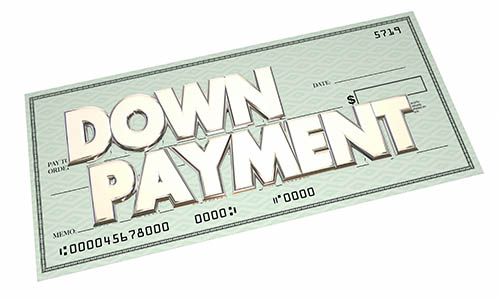Everything Homeowners Need To Know About Down Payments
 Buying a house is an exciting time, but homeowners also need to make the best financial decision to meet their needs. One of the biggest decisions potential homeowners will face is how much money to put down.
Buying a house is an exciting time, but homeowners also need to make the best financial decision to meet their needs. One of the biggest decisions potential homeowners will face is how much money to put down.
A down payment is the amount of money that homeowners pay upfront when they purchase a home. Many homeowners believe they need to put down 20 percent; however, this is not always the case. What do homeowners need to know about putting a down payment on a house?
20 Percent Is Not Always Required
The reason why homeowners often believe they need to put down 20 percent is that lenders will often require a 20 percent down payment to avoid paying PMI. PMI stands for private mortgage insurance. If a homeowner puts down less than 20 percent, the lender takes on significant risk if the homeowner defaults. Therefore, the lender may require the homeowner to purchase PMI to protect the lender against the risk of default.
Homeowners might be able to secure a loan with 10 percent down if they are willing to pay PMI. First-time home buyers might be able to secure a home loan with as little as 3.5 percent down if they go with an FHA loan.
The Relationship Between Down Payments And Interest Rates
Homeowners might want to put down more money to earn a lower interest rate. Securing a lower interest rate could save homeowners tens of thousands of dollars over the life of the loan. If homeowners put down more money, the lender doesn’t take on as big of a risk. Therefore, the lender might be willing to charge a lower interest rate.
Work With A Professional
Ultimately, the size of the down payment is one of the biggest decisions potential homeowners have to make. It can take a long time to save up 20 percent for a home, but this is not always required. Homeowners need to know whether they need to pay PMI if they do not put 20 percent down, and they need to understand how the size of the down payment will impact the interest rate on a loan. It is a prudent idea to consult with a professional when deciding how much money to put down for a house.

 With all the expenses that go into monthly living and the temptations that come along with life, saving money for the down payment on your new home can be quite a struggle for many people. If you’re having a hard time saving and are wondering what you can do to ensure a higher bank balance next month, here are a few things that may pose a risk to getting the home of your dreams.
With all the expenses that go into monthly living and the temptations that come along with life, saving money for the down payment on your new home can be quite a struggle for many people. If you’re having a hard time saving and are wondering what you can do to ensure a higher bank balance next month, here are a few things that may pose a risk to getting the home of your dreams. One of the challenges you will face when deciding how much money to put down on your new home is whether to put down a larger down payment or to take a bit of money from your down payment and use it to pay “discount points” to lower your interest rate.
One of the challenges you will face when deciding how much money to put down on your new home is whether to put down a larger down payment or to take a bit of money from your down payment and use it to pay “discount points” to lower your interest rate. Purchasing a home is a major decision, and it could be the most expensive financial transaction somebody ever makes. Therefore, it is important to get this right. One of the biggest hurdles for a new homeowner is coming up with enough money for the down payment. A lot of people believe they require 20 percent down to purchase a home. Saving this amount of money can be overwhelming, and some people are wondering, is this really necessary? There are several key points to keep in mind.
Purchasing a home is a major decision, and it could be the most expensive financial transaction somebody ever makes. Therefore, it is important to get this right. One of the biggest hurdles for a new homeowner is coming up with enough money for the down payment. A lot of people believe they require 20 percent down to purchase a home. Saving this amount of money can be overwhelming, and some people are wondering, is this really necessary? There are several key points to keep in mind.  In the current economy, there are a lot of millennials who are thinking about buying a home; however, the price of homes is rising quickly. It can be challenging for millennials to save the money they need to buy a home. When this is combined with other monthly expenses they have, millennials might be financially unprepared to buy a home.
In the current economy, there are a lot of millennials who are thinking about buying a home; however, the price of homes is rising quickly. It can be challenging for millennials to save the money they need to buy a home. When this is combined with other monthly expenses they have, millennials might be financially unprepared to buy a home.